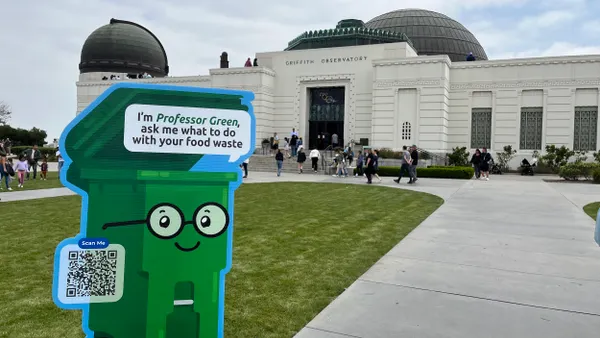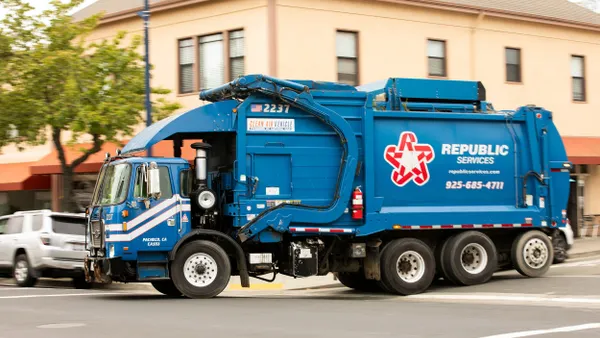Dive Brief:
- The Recycling Partnership debuted a new three-pronged report, "The Bridge to Circularity," aimed at developing a more robust system to recycle packaging in the U.S. The nonprofit will provide initial funding for the first initiative, "Pathway to Recyclability," focused on enhancing packaging design through new collaborations.
- Second, the organization calls for $250 million worth of investment aimed at "Unlocking Supply" for the growing number of manufacturers setting recycled content goals. Funding will be directed to collection and MRF infrastructure, consumer education and unspecified "advocacy efforts."
- Finally, the nonprofit calls for an additional $250 million to pursue a new "Recycling 2.0" model. Funding will be directed to efforts around data systems, consumer participation, infrastructure and research into "new and emerging innovations."
Dive Insight:
This ambitious new report is said to be inspired by the Ellen MacArthur Foundation's own New Plastics Economy plan, and comes with the philanthropic organization's endorsement. Signatories to that original pledge said they will work to make all plastic packaging reusable, recyclable or compostable by 2025. More than 400 brands have now signed on (11 of which are also funders for The Recycling Partnership) but it's widely recognized that these goals may not be achievable in the current system.
"...[T]he reality of delivering on the Global Commitment targets in the U.S. will require massive national and industrywide efforts to create a more circular economy for plastics, by harmonizing production, improving collection mechanisms, and creating more robust domestic end markets," reads today's new report.
The report highlights how the U.S. market for recycled PET alone is estimated to be 1 billion pounds short of projected demand by 2025. When that lens is expanded to other materials, beyond just plastics, The Recycling Partnership sees similar or greater challenges in execution.
“Our current recycling system is fundamentally underfunded and incapable of delivering a circular economy without dramatic evolution," said CEO Keefe Harrison in a statement. “We’re providing actionable solutions to help current and future partners build a sustainable and effective recycling system in the U.S ... This will be the first step toward fully optimizing our nation’s recycling capabilities and ultimately building the bridge to a circular economy.”
While numerous initiatives are underway by the likes of the Environmental Protection Agency, U.S. Chamber of Commerce Foundation and others, none are seen as having adequate levels of funding or policy heft to achieve the momentum required for a full system change. Some of The Recycling Partnership's goals can be achieved by partnering with those already doing similar work (the Association of Plastic Recyclers and Sustainable Packaging Coalition on design, Closed Loop Partners on infrastructure funding), but it will also require buy-in from many others.
Additional funding beyond $500 million, as well as greater engagement from new stakeholders, is also seen as critical to making this the dominant initiative its creators envision. More packaging manufacturers, waste and recycling service providers, government agencies, trade associations, research institutions and others may be tapped for participation.
The Recycling Partnership remains tight-lipped on what its burgeoning policy efforts will entail, but the corporate-backed nonprofit's voluntary producer responsibility origins are expected to drive the agenda. The hope is that market demands can inspire greater buy-in from brands grappling with the realities of achieving their sustainability goals and meeting heightened consumer expectations.
With states on both coasts moving closer to extended producer responsibility policies for packaging, and many different ideas of how recycling should work still being debated, creating a "bridge" to a circular economy in the U.S. remains a daunting task. As the nation's largest recycling nonprofit, The Recycling Partnership believes it's best suited to spearhead this new campaign – not just to enhance the current recycling system but create a whole new one.











